Tony Barton
Well-Known Member
- Joined
- Aug 12, 2011
- Messages
- 179
58th Regiment in Egypt.
Here's my latest 1/6th scale figure, and this time I've included more photos, mostly so people cane see the endless reposing possibilities with these large figures
The 58th ( Rutland) Regiment had an active role during the Battle of Alexandria, which took place in the pre-dawn amongst the ruins of Heliopolis, on a narrow spit of land with the sea on one side and a lake on the other. The 58th were the right flank unit, on the seashore next to the 28th ( who famously won their back badge when attacked in front by infantry and behind by cavalry ) , and were heavily engaged in repulsing the French attacks.
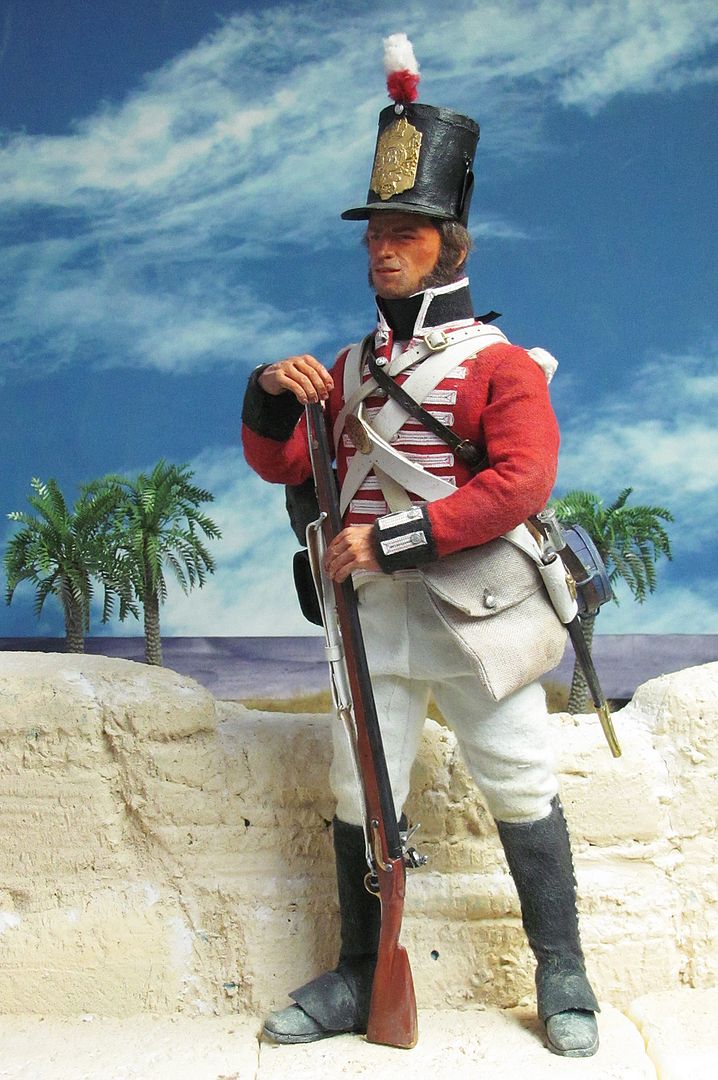
The figure shows the new style that had arrived with the new century. Gone is the long coat, replaced by a jacket, and out goes the cocked hat in favour of a “ Shakoe Cap “.
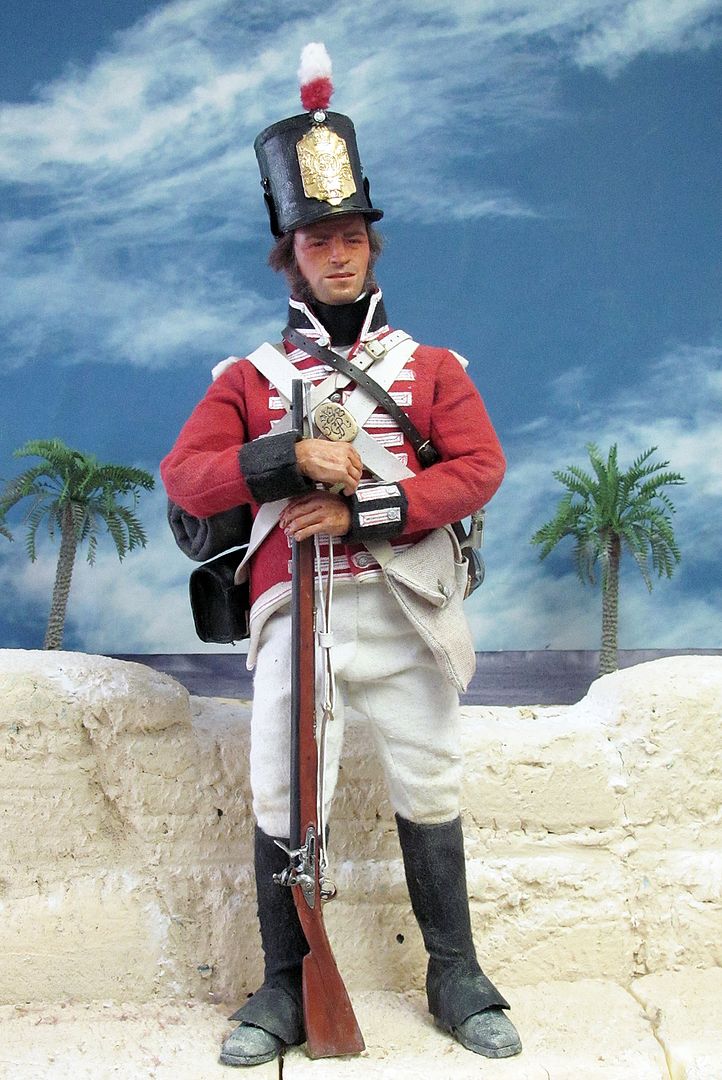
The shako was made from lacquered felt ( not leather as sometimes described ) ,with a very thin stamped brass plate on the front, cockade and worsted tuft. There’s a ”fall” or neck protector hooked up on the back.
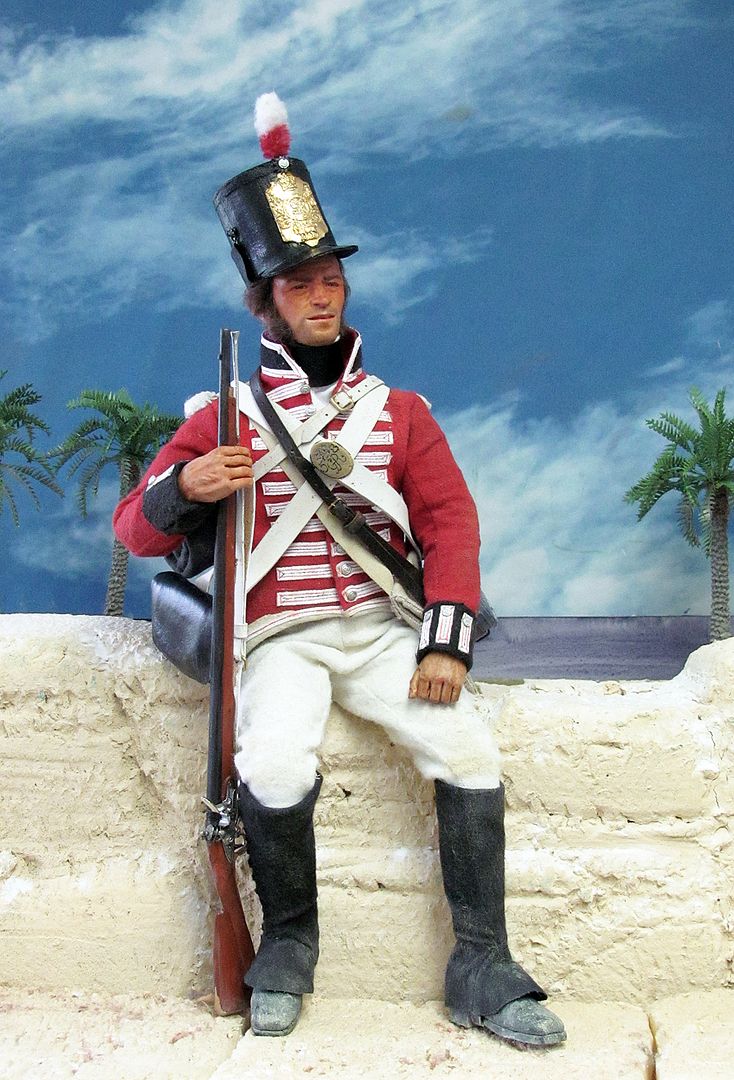
The regulation hairstyle was still long, tied into the 11” pigtail, to last only a few years as the new short haircuts became fashionable .
The men landed without knapsacks, just a blanket rolled and slung across the back, into which a few necessaries were stowed. Haversack and canteen, with biscuits and diluted rum. The Navy were present in force, and this Army was well victualled.
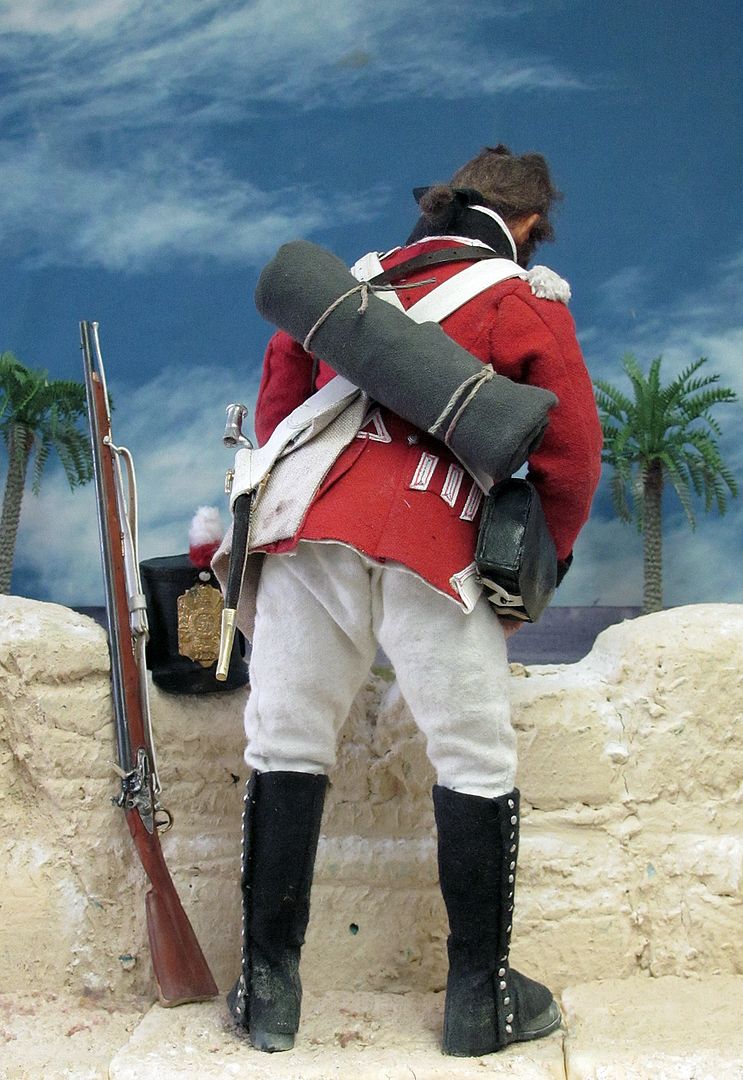
The musket is the India Pattern, with the shorter 39” barrel, issued as a subsitute after a massive fire at the Tower destroyed stocks of the Short Land Pattern. It was cheaper and quicker to make , so became standard issue thereafter
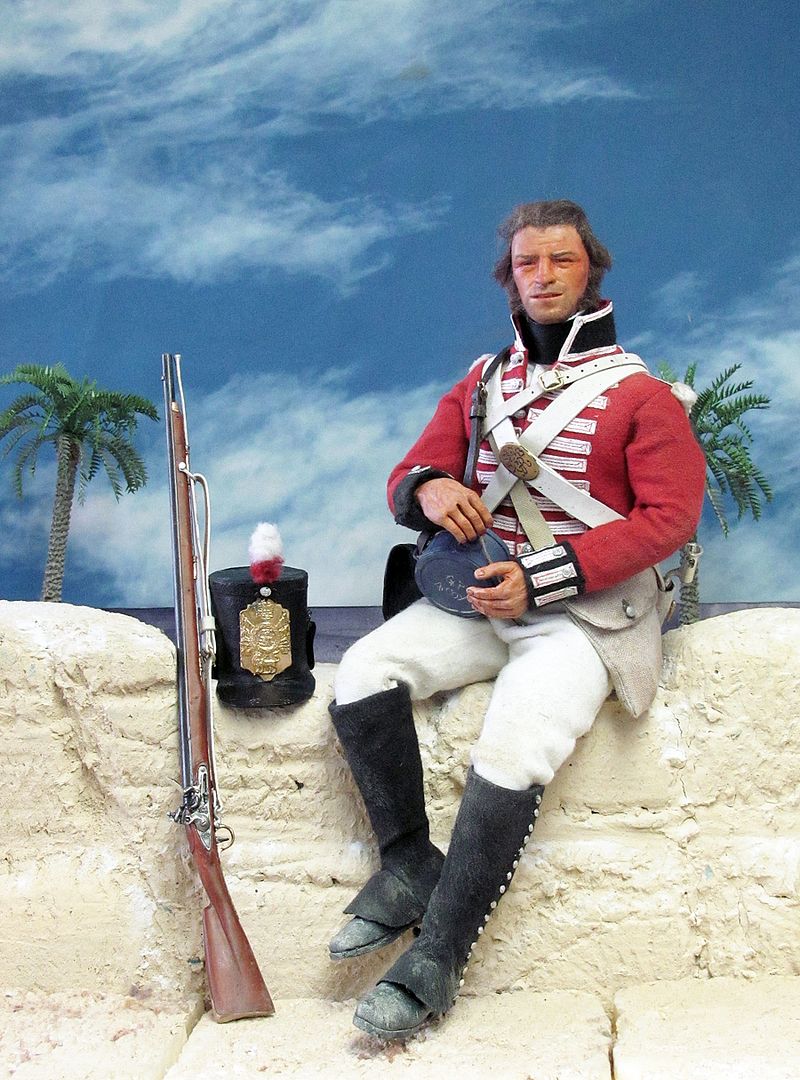
It was March , so the weather would be cool or mild, making the uniforms reasonably comfortable.
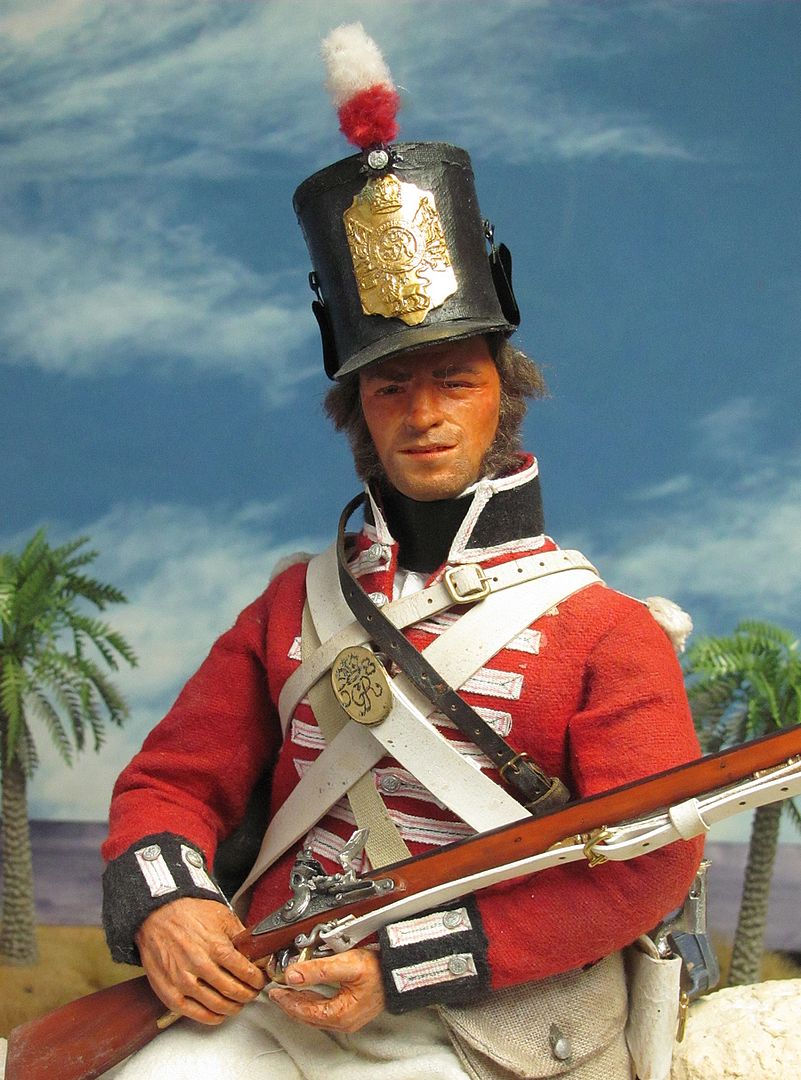
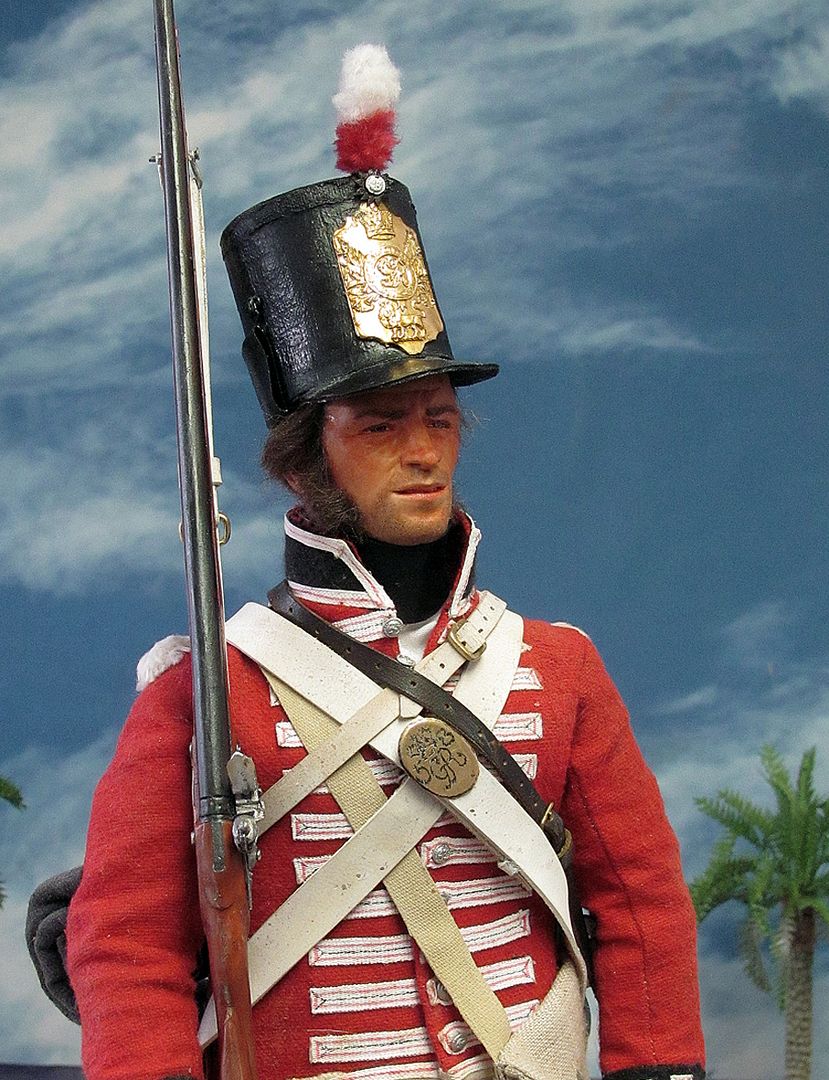
That would change once the summer heat started. During the long sea voyage, uniforms were stored, the men wearing “slop” clothing on the transports, so they would be pretty well-dressed on landing if the rats hadn’t got at the clothes. . The action was in the lush Delta rather than the desert, so there were plenty of local supplies, including things very rare to Thomas Atkins, like dates and spiced bread .It must have been quite a culture shock for most of the men, who had rarely served overseas before.
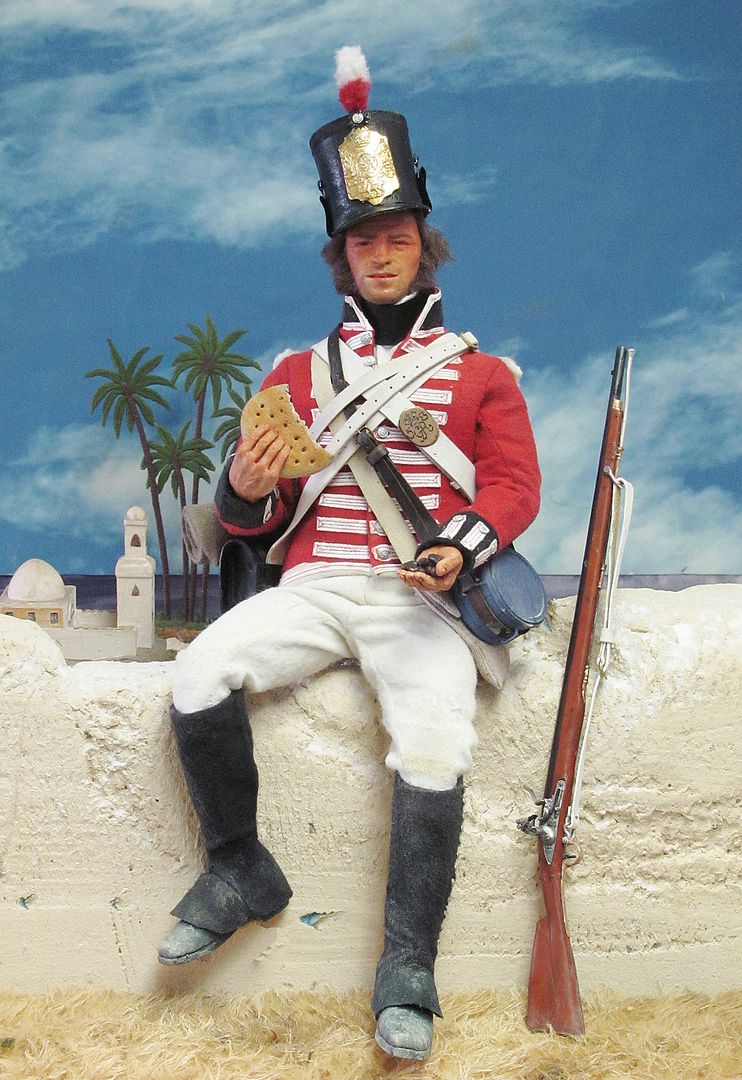
**********************************************************************************************
The figure is all home-made, using brushed cotton cloth, goatskin, linen, etc. He's a DML body underneath, lightly modified.
*****************************************************************************
Here's my latest 1/6th scale figure, and this time I've included more photos, mostly so people cane see the endless reposing possibilities with these large figures
The 58th ( Rutland) Regiment had an active role during the Battle of Alexandria, which took place in the pre-dawn amongst the ruins of Heliopolis, on a narrow spit of land with the sea on one side and a lake on the other. The 58th were the right flank unit, on the seashore next to the 28th ( who famously won their back badge when attacked in front by infantry and behind by cavalry ) , and were heavily engaged in repulsing the French attacks.

The figure shows the new style that had arrived with the new century. Gone is the long coat, replaced by a jacket, and out goes the cocked hat in favour of a “ Shakoe Cap “.

The shako was made from lacquered felt ( not leather as sometimes described ) ,with a very thin stamped brass plate on the front, cockade and worsted tuft. There’s a ”fall” or neck protector hooked up on the back.

The regulation hairstyle was still long, tied into the 11” pigtail, to last only a few years as the new short haircuts became fashionable .
The men landed without knapsacks, just a blanket rolled and slung across the back, into which a few necessaries were stowed. Haversack and canteen, with biscuits and diluted rum. The Navy were present in force, and this Army was well victualled.

The musket is the India Pattern, with the shorter 39” barrel, issued as a subsitute after a massive fire at the Tower destroyed stocks of the Short Land Pattern. It was cheaper and quicker to make , so became standard issue thereafter

It was March , so the weather would be cool or mild, making the uniforms reasonably comfortable.


That would change once the summer heat started. During the long sea voyage, uniforms were stored, the men wearing “slop” clothing on the transports, so they would be pretty well-dressed on landing if the rats hadn’t got at the clothes. . The action was in the lush Delta rather than the desert, so there were plenty of local supplies, including things very rare to Thomas Atkins, like dates and spiced bread .It must have been quite a culture shock for most of the men, who had rarely served overseas before.

**********************************************************************************************
The figure is all home-made, using brushed cotton cloth, goatskin, linen, etc. He's a DML body underneath, lightly modified.
*****************************************************************************
